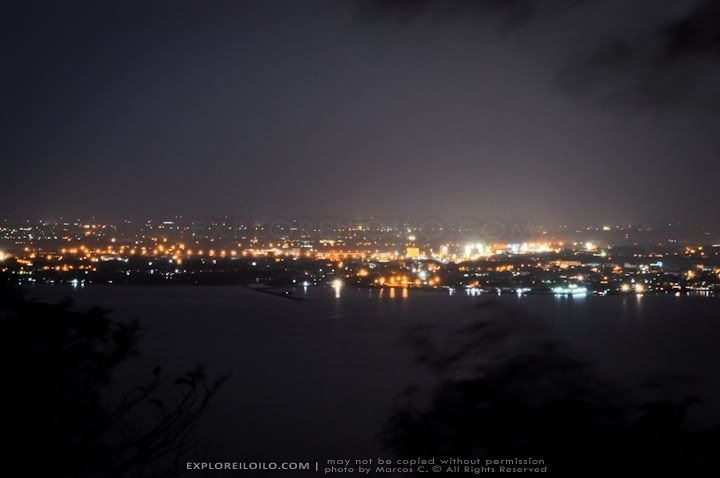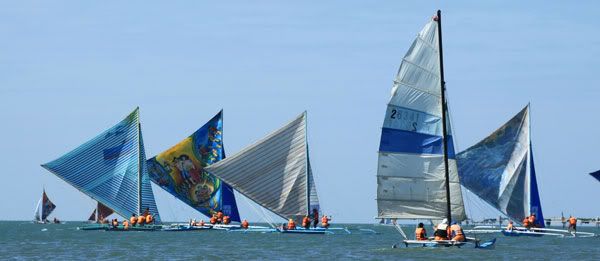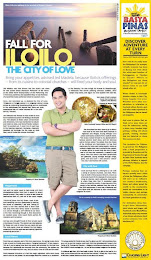By: Rolando T. Dy
MANY things are happening in Iloilo: The Riverbank, the Apec Convention Center, Ayala Park, Gaisano City Center and Megaworld Complex.
After many years of lethargy, there is rebirth.
The city opened up to the world in 1855 and became the biggest port in the country anchored on sugar exports.
In 1889, the Queen Regent of Spain named it the Queen’s City of the South, and in 1890, the city government was established.
In the 1950s, the labor unions controlled by the Espinosas and the Navas caused a major disaster to the Iloilo economy, according to Iloilo chronicles.
To seize the port, an oil depot was bombed. Control of the port by lawless groups discouraged entrepreneurs and investors.
Passengers were scared since not only the arrastres were rumored to extort from shipping companies and businessmen but pickpockets also proliferated.
The merchants and investors fled the city. As the price of sugar fell, international ship calls to Iloilo declined.
Moreover, prosperous businessmen left and settled in Manila and Negros.
Iloilo has size and influence. It experienced a large diaspora. Negros Occidental and towns in North Cotabato, South Cotabato and Sultan Kudarat were settled by Ilonggos.
Based on the census, there are about 7.5 million Ilonggo speakers today concentrated in their home base of Iloilo, Capiz, Negros Occidental, as well as in North Cotabato, South Cotabato and Sultan Kudarat.
There are also significant minorities in Bukidnon, Davao region, Agusan del Sur, Masbate, Palawan, and Occidental Mindoro.
Part of my roots come from Iloilo. My maternal grandfather, a Tesoro, came from the historic town of Miag-ao.
This means that there are at least two million Ilonggo speakers outside the home base.
This excludes overseas communities such as New Jersey and Los Angeles. This in an asset for tourism, investments and property development.
In 2010, Iloilo province’s population, excluding Iloilo City, was 1.81 million. If Iloilo City is included, the population was 2.23 million and it is estimated at 2.4 million in 2015.
Iloilo is one of the country’s leading food baskets. While it comprises only 2.4 percent of the country’s population, it supplies 4.5 percent of rice, 5.1 percent of sugar, 3.6 percent each of hogs and fish products.
Its north, centered in Estancia, Concepcion and Ajuy, hosts fishing and corn industries.
The central part, including the Dumangas, Pototan, Oton and Santa Barbara is an agribusiness center.
It produces crops, such as palay, sugarcane and milkfish, among others, as well as high value crops in upland Leon.
The southern corridor’s economy—Miag-ao, Tigbauan, Guimbal, San Joaquin—is based on tourism due to the centuries-old churches.
Iloilo City is the center for real estate, lodging, medical centers, education, shopping, trade and finance, IT/BPO (information technology/business process outsourcing) and many more in Western Visayas. Panay Island has a population of about 4.2 million.
The leading schools are : UP Visayas, Central Philippine University, West Visayas State University, University of Iloilo, University of San Agustin, St. Paul’s University Iloilo City, John B. Lacson Foundation Maritime University, Iloilo Science and Technology University, and Western Institute of Technology.
The major hotels include: Amigo Terrace, Circle Inn, Days Hotel, Diversion 21, Grand Dame, Harbor Town, Injap Tower, Richmonde, Sarabia Manor, and Hotel del Rio.
The Business Processing Association of the Philippines ranked Iloilo among the top 10 “next wave” cities for BPO/IT because of the low cost of doing business and the availability of talent.
The entry of BPO companies began in 2004 with Callbox Solutions.
The 14 locators now include: Avatar Technologies, BrushNetwork, ECHO, Eversun Software, GMCI, Hinduja Global Solutions, Interactive Voice, Medialink, SPI Global, Star Tek, Technocall, Savant Technologies, Teletech, and
Transcom Asia PH.
According to the Iloilo Federation for Information Technology, the BPO industry has generated employment for some 11,000.
In 2014, international advisory investment research firm Tholons ranked Iloilo City 98th in the Global Top 100 Outsourcing Cities.
What are the recent developments?
The River Esplanade is a 1.2-kilometer park. It was designed by Paulo Alcazaren, who worked on the Singapore Quay and River Esplanade. The park forms part of the city’s heritage zone.
The zone includes the Gothic-Renaissance Molo church built in in 1831 and the American period Governor Carpenter bridge that connects Molo and Mandurriao.
Public and private investments are ongoing to restore heritage buildings around the city and province.
The Iloilo Business Park is a 72-hectare township envisioned to be “the next central business district” in Iloilo City. Megaworld is investing P35 billion for its development in the next 10 years.
It hosts BPO office towers, a mall, Richmonde Hotel, The Courtyard by Marriott and Iloilo Convention Center.
Some 80 percent of the commercial spaces has been sold out.
Atria Park District is a 21-hectare mixed-use development by Ayala Land. The development is estimated to cost over P15 billion.
A recently completed project in the area is the Ayala Technohub. Under development are Seda Hotel and Avida Towers.
The Gaisano Iloilo City Center is a P12-billion, 16-hectare mixed-used development, that will include a 40-story Gaisano Tower.
The Jalaur River Multipurpose Project is a mega project (P11.2 billion), funded by Korea Export-Import Bank. It will be the biggest dam project outside of Luzon and is targeted for completion by 2018.
The project will provide irrigation to 31,849 hectares of farmland, deliver 86,000 cubic meters of bulk water a day to water-scarce Iloilo City, mitigate flooding as well as foster eco-tourism.
Hopefully, the project will help diversify agriculture for exports.
Iloilo has several major industrial plants: Two sugar mills, one flour mill, and at least four feedmills. Future developments in agriculture could spur agri-manufacturing industries.
What about air connections?
There are flights to Singapore (2x a week) and to Hongkong (3x a week) via Cebu Pacific. Meanwhile, there are five flights daily to Manila via Cebu Pacific and PAL.
There are also scheduled flights from Iloilo to Cagayan de Oro, General Santos and Puerto Princesa via Cebu Pacific. Certainly, Iloilo has one of the busiest airports in the Visayas and Mindanao, after Cebu.
Iloilo renaissance has taken off. Thanks to the indomitable spirit of the Ilonggos. The best is yet to come.
============================================



















